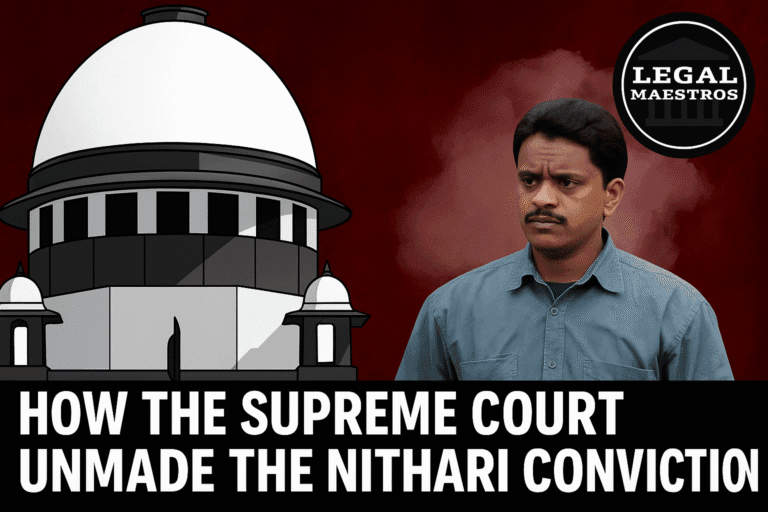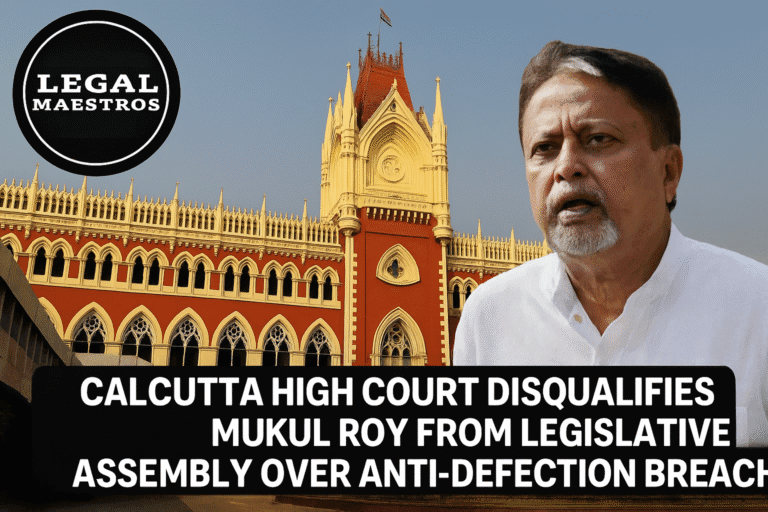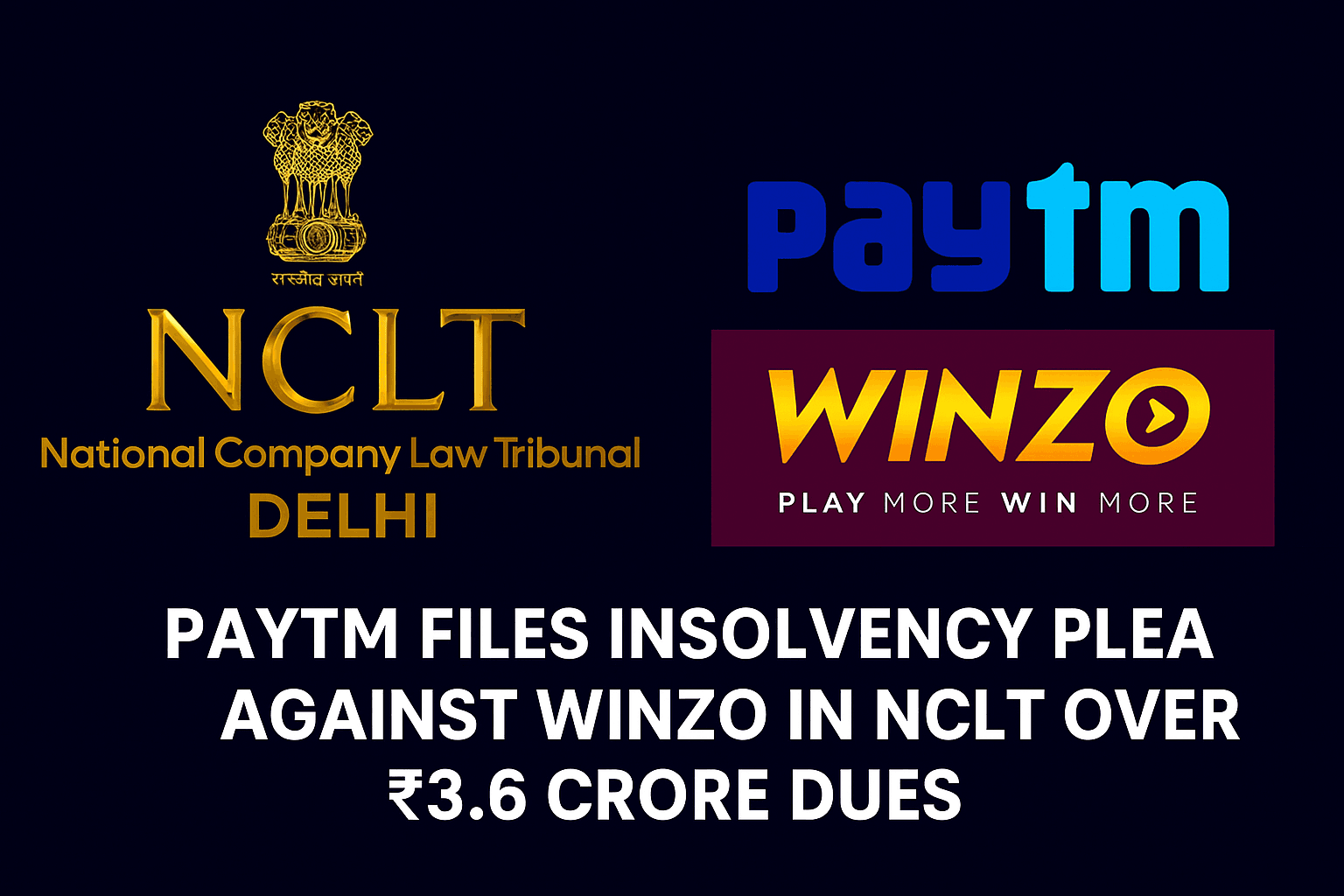
Introduction
In a significant ruling, the Supreme Court of India, in the case of Pradnya Pranjal Kulkarni v. State of Maharashtra & Anr., clarified the jurisdictional scope for quashing First Information Reports (FIRs), charge-sheets, and cognizance orders under Article 226 of the Constitution and Section 528 of the Bharatiya Nagarik Suraksha Sanhita (BNSS), equivalent to Section 482 of the Code of Criminal Procedure (CrPC). The Court set aside an erroneous Bombay High Court order that dismissed a writ petition as infructuous merely because a charge-sheet was filed during its pendency. This decision, delivered by Justices Dipankar Datta and Prashant Kumar Mishra, emphasized the distinct roles of Article 226 and Section 528 BNSS in addressing challenges to criminal proceedings.
Background of the Case
For any queries or to publish an article or post or advertisement on our platform, do call at +91 6377460764 or email us at contact@legalmaestros.com.
The appeal arose from a Bombay High Court decision that dismissed a writ petition filed under Article 226 and Section 528 BNSS to quash an FIR. The High Court deemed the petition infructuous after a charge-sheet was filed during the proceedings, relying on the Supreme Court’s ruling in Neeta Singh v. State of UP (2024). However, the Supreme Court found that the High Court misinterpreted Neeta Singh and failed to consider the broader jurisdiction available under Section 528 BNSS, leading to a miscarriage of justice.
Supreme Court’s Observations on Jurisdiction
The Supreme Court elucidated the circumstances under which FIRs, charge-sheets, and cognizance orders can be challenged. It held that prior to a court taking cognizance of an offense, a writ petition under Article 226 can be invoked to quash an FIR or charge-sheet. However, once a judicial order of cognizance is passed, the remedy shifts to Section 528 BNSS. This section empowers courts to quash not only the FIR and charge-sheet but also the cognizance order, provided the petitioner includes the cognizance order in the pleadings and establishes a strong case for quashing.
For any queries or to publish an article or post or advertisement on our platform, do call at +91 6377460764 or email us at contact@legalmaestros.com.
The Court stated: “So long cognisance of the offence is not taken, a writ or order to quash the FIR/charge-sheet could be issued under Article 226; however, once a judicial order of taking cognisance intervenes, the power under Article 226 though not available to be exercised, power under Section 528, BNSS was available to be exercised to quash not only the FIR/charge-sheet but also the order taking cognisance, provided the same is placed on record along with the requisite pleadings to assail the same and a strong case for such quashing is set up.”
Critique of the Bombay High Court’s Ruling
The Supreme Court criticized the Bombay High Court for misinterpreting Neeta Singh. In Neeta Singh, the Supreme Court had ruled that judicial orders, such as those taking cognizance, are not amenable to challenge under Article 226. However, in the present case, the petitioner had invoked both Article 226 and Section 528 BNSS. The Supreme Court noted that the High Court failed to recognize this distinction and overlooked its jurisdiction to examine the FIR, charge-sheet, and cognizance order under Section 528 BNSS. The Court emphasized that the High Court could have molded the relief sought, subject to its satisfaction that quashing was warranted.
For any queries or to publish an article or post or advertisement on our platform, do call at +91 6377460764 or email us at contact@legalmaestros.com.
The Court remarked: “Since its jurisdiction under Section 528 of the BNSS was also invoked and the relief claimed could have been suitably moulded subject, of course, to the requisite satisfaction of the court that an order of quashing is warranted on facts and in the circumstances. We have no hesitation to hold that the Division Bench did have the jurisdiction to pass such an order as per the ‘Sitting List’.”
Distinguishing Neeta Singh from the Present Case
The Supreme Court highlighted the factual dissimilarities between Neeta Singh and the present case. In Neeta Singh, the petition was filed solely under Article 226, and cognizance had already been taken, limiting the court’s jurisdiction. In contrast, the present case involved both Article 226 and Section 528 BNSS, and the High Court’s roster bench was competent to address challenges to the FIR, charge-sheet, and cognizance order. The Court concluded that the Bombay High Court’s misapplication of Neeta Singh resulted in a failure of justice.
For any queries or to publish an article or post or advertisement on our platform, do call at +91 6377460764 or email us at contact@legalmaestros.com.
Outcome and Directions
The Supreme Court disposed of the appeal at the admission stage without issuing notice to the respondents. It revived the writ petition for fresh consideration by the Bombay High Court’s roster bench, directing it to evaluate the petitioner’s grievances in accordance with the law. The Court underscored that the High Court’s jurisdiction under Section 528 BNSS allowed it to consider quashing the FIR, charge-sheet, and cognizance order, provided the necessary pleadings were in place.
Conclusion
For any queries or to publish an article or post or advertisement on our platform, do call at +91 6377460764 or email us at contact@legalmaestros.com.
This ruling reinforces the procedural framework for challenging criminal proceedings in India. It clarifies that Article 226 is available before cognizance, while Section 528 BNSS provides a broader remedy post-cognizance, encompassing FIRs, charge-sheets, and cognizance orders. By correcting the Bombay High Court’s error, the Supreme Court ensured that petitioners are not unjustly deprived of their right to seek relief due to procedural misinterpretations.




![Research Assistantship @ Sahibnoor Singh Sindhu, [Remote; Stipend of Rs. 7.5k; Dec 2025 & Jan 2026]: Apply by Nov 14, 2025!](https://legalmaestros.com/wp-content/uploads/2025/11/Gemini_Generated_Image_s0k4u6s0k4u6s0k4-768x707.png)
![Karanjawala & Co Hiring Freshers for Legal Counsel [Immediate Joining; Full Time Position in Delhi]: Apply Now!](https://legalmaestros.com/wp-content/uploads/2025/11/Gemini_Generated_Image_52f8mg52f8mg52f8-768x711.png)